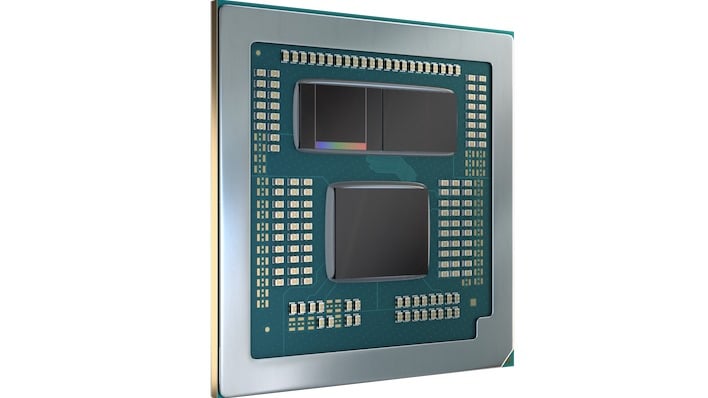AMD Ryzen 8000 Strix Halo CPU Rumored For 16 Zen 5 Cores And 3D V-Cache Upgrade Path

It looks like AMD might be wedging another design in between its desktop and laptop parts for the next generation. If leaks and rumors are correct, the monolithic part for next-gen laptops will be known as Strix Point, and it will come with four full-power Zen 5 cores as well as eight high-density Zen 5c cores. There will be a different design for desktops, of course, but the really interesting new part is the rumored Strix Halo.
Strix Halo was leaked some months back, and at that time, a lot of people weren't willing to take the idea seriously. It's a crazy part, as leaked: a chiplet processor with sixteen full-fat Zen 5 cores and a 40 CU RDNA 3.5 graphics processor including 32MB of Infinity Cache. That massive graphics engine—theoretically twice as powerful as a Radeon RX 6750 XT—is fed by an LPDDR5X bus twice as wide as a typical PC CPU's at 256-bits. This would be the first implementation of Infinity Cache on an integrated GPU, too.

In the original leak, based on the diagram shown, it might be reasonable to assume that the 16 Zen 5 cores were in fact Zen 5c with an 8+8 configuration on a single die. The latest leak from Everest (@Olrak29_ on the X) seems to indicate that this is not the case, and that Strix Halo in fact has a full 16 high-power cores, just like a Dragon Range or Raphael part (except with Zen 5.)
Seeing that, fellow leaker kopite7kimi says that "Strix Halo looks like a desktop Zen 5 with a different IOD." IOD, of course, refers to the cIOD or "I/O chiplet" of AMD's multi-part processors. The graphics portion of Raphael lives on the IOD, and in fact takes up most of it. Enthusiasts have imagined a part that drops one of the CCDs—one of the CPU core chiplets—and replaces it with a GPU for some time. There would be limitations with that approach, particularly to do with memory bandwidth, as the chiplets have just a single link to the cIOD.
If these leaks are accurate, and it's looking like they may be, then it seems like AMD clearly saw the demand for ever-more-powerful integrated graphics, and decided to simply slap down a gigantic GPU with its GPU-class memory interface as the cIOD for a couple of Ryzen CPU chiplets. This processor would have immense compute throughput for both CPU and GPU tasks, and would likely still be limited by memory bandwidth despite the relatively-wide memory bus.
According to the original Strix Halo leak, AMD is also preparing variants of Strix Halo that scale all the way down to 6 CPU cores and 20 compute units. That particular model would supposedly have its memory bus cut in half, reducing available memory bandwidth from around 270 GB/sec (assuming ultra-fast 8400 MT/s LPDDR5X) to just 135 GB/sec. That's really not much memory bandwidth for such a big GPU, but maybe Infinity Cache can help make up some of the difference, at least in lower resolutions.
Actually, if Strix Halo is using the same CCD chiplets as AMD's desktop Zen 5 processors, it's quite possible that they will retain the TSVs required for 3D V-Cache implementation. Adding on 3D V-Cache the same way that AMD has done in the past wouldn't benefit the graphics performance much (aside from reducing contention between CPU memory accesses and GPU memory requests), but we can of course imagine a world where AMD staples an extra 64MB of Infinity Cache on the cIOD. There's nothing to support such a fantasy yet, though.

Moore's Law is Dead seems convinced that the goal with Strix Halo is to compete with Apple's M2 processors that likewise have powerful integrated graphics. That doesn't seem particularly probable to us because the folks who would buy an AMD gaming laptop and the folks who would buy a MacBook are not likely to have a lot of crossover. Instead, we see a niche for Strix Halo in both power-efficient gaming laptops as well as small-form-factor gaming PCs. Something like Strix Halo could make an incredibly compelling chip for a living-room PC as well.
If the earlier leaks are accurate, AMD will launch the monolithic Strix Point around the middle of next year, or about a year from now. Strix Halo is expected to come after that, somewhere in the latter half of 2024. We're eager to hear more about this curious CPU, as well as about the RDNA 3.5 architecture, so stay tuned, because we'll be reporting anything we hear as soon as we do.


